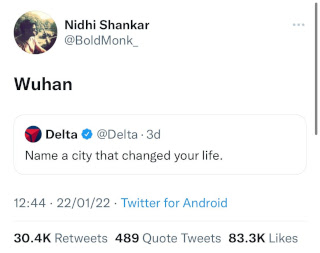[From Unsplash]
Good morning,
If someone confronts us with the question, "which is more dangerous—fossil fuels or nuclear, and if one of the nuclear disasters such as Fukushima or Chernobyl is fresh in our memories we are very likely to say, nuclear.
But is it really more dangerous? In Foolproof: Why Safety Can Be Dangerous and How Danger Makes Us Safe, Greg Ip gives a different perspective. He writes:
“Former NASA scientist James E. Hansen, one of the loudest voices in the scientific community warning of global warming, and his colleague Pushker A. Kharecha have tried to quantify the relationship between nuclear power and mortality. They figured that between 1971 and 2009, the use of nuclear power had prevented 1.84 million deaths by avoiding the burning of coal and natural gas and the resulting air pollution. In Germany, the figure was 117,000. They then asked how many deaths would be prevented if nuclear power were not phased out. They concluded that between 2010 and 2050, if nuclear power replaced natural gas, 420,000 to 680,000 deaths would be avoided. If it replaced coal, the number of lives saved rises to between 4.4 million and 7 million. These numbers don’t reflect any additional harm from climate change such as heat waves, floods, droughts, and food shortages. Without nuclear power, it would be far harder to hold carbon emissions to what they consider a safe level. Thus, the decision by Japan, Germany, and Switzerland to idle or phase out nuclear power will almost certainly cause thousands of deaths “due to the ill effects of pollution and a warming climate.
Can such a decision be justified? It depends on what matters more: the maximum hypothetical deaths of a particular energy technology, or the likeliest number of deaths. The probability of a core meltdown in a modern nuclear reactor is exceedingly small. One study estimates that an existing Swiss plant would suffer a meltdown capable of killing more than two thousand about once every million years. Maximum fatalities, of course, could be much higher; it depends on the reactor type and location. So a society determined to prevent the most catastrophic accident possible would naturally avoid nuclear power, while one whose decision is based on the probability of death from different energy technologies would favor nuclear.”
What do you think?
India is hurting
A report in the Indian Express yesterday had our attention and many felt despair. Clearly, there is much devastation the pandemic has caused. “In a trend unprecedented since economic liberalisation, the annual income of the poorest 20% of Indian households, constantly rising since 1995, plunged 53% in the pandemic year 2020-21 from their levels in 2015-16,” Sandeep Singh wrote in the newspaper.
How deep the divide between the haves and have-nots has never been more stark. “The survey shows that the richest 20% of households have, on average, added more income per household and more pooled income as a group in the past five years than in any five-year period earlier since liberalisation. Exactly the opposite has happened for the poorest 20% of households — on average, they have never actually seen a decrease in household income since 1995. Yet, in 2021, in a huge knockout punch caused by Covid, they earned half as much as they did in 2016.”
Dig deeper
Social media's driving force
In Discourse magazine, Andrey Mir, author of Human as Media and Postjournalism offers an interesting framework to think about how social media works. He writes there are two types of authors on the internet, the heavy authors who contribute content, and lazy authors who drive engagement.
Here’s the pyramid.

However, unlike the writers and readers in the traditional media, they operate differently, their relationship is more dynamic.
Mir writes, “One can suggest different classifications. What is important is that the media activity of 4.85 billion internet users comes down to different intensities of employing their now-technologically-emancipated authorship. Ultimately, the categories boil down to heavy authors, who create the forms for their content, and lazy authors, who contribute their opinions in the “pre-cooked” forms of engagement.
To put it simply, heavy authors contribute their content, while lazy authors contribute only their presence. But their presence differs from that of the silent audiences of the past, such as readers of physical books and magazines. Unlike those audiences, today’s emancipated authors, even the laziest ones, can engage with the environment of content publishing in a variety of ways, ranging from a mere click or “like” to posting something of their own. Their engagement is what sustains social media and the internet in general. Engagement materializes time and attention, the most precious commodity in digital capitalism.”
Dig deeper
Plain speak

(Via WhatsApp)
Found anything interesting and noteworthy? Send it to us and we will share it through this newsletter.
And if you missed previous editions of this newsletter, they’re all archived here.
Warm regards,
Team Founding Fuel
(Note: Founding Fuel may earn commissions for purchases made through the Amazon affiliate links in this article.)

